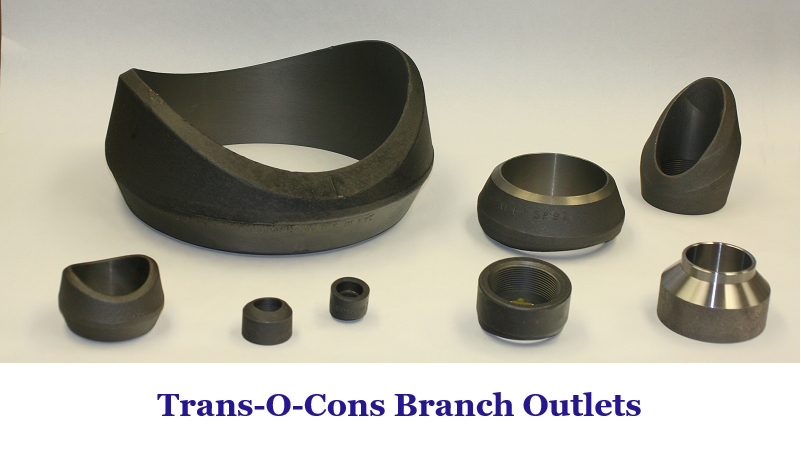

When it comes to designing and fabricating complex piping systems, branch connections are essential. Traditional methods like welding tees or saddles have long been used, but modern systems often rely on a more efficient, cost-effective, and versatile solution; branch outlets, also known as o-lets.
From high-pressure steam lines to oil, gas, and chemical piping, o-lets have become the preferred method for creating reliable and space-saving branch connections.
In this blog, we’ll explore the different types of branch outlets and the key benefits they offer for engineers, fabricators, and contractors.
What Are Branch Outlets (O-lets)?
Branch outlets, or o-lets, are forged fittings used to create a branch from a larger run of pipe to a smaller diameter outlet. Unlike traditional tees that interrupt the run pipe, o-lets are welded onto the side wall of the main pipe, preserving the flow path and strength of the system.
Common types include:
-
Standard outlet – For 90° branch connections
-
Lateral outlet – For 45° branch connections
-
Elbow outlet – Designed for connections on elbows
All of the above are available with Butt Weld, Socket Weld, Threaded (Male & Female), Grooved, Plain End Pipe, and Flanged Outlet connections
These fittings are typically manufactured to MSS SP-97 and available in materials like carbon steel, stainless steel, alloy steel, and nickel alloys.
Key Benefits of Using Branch Outlets
1. Improved Strength and Flow Integrity
Unlike welded saddles or manually fabricated branches, o-lets are engineered and forged for strength. They provide reinforced connections that can handle high pressure and stress without compromising pipe integrity.
2. Space Efficiency
O-lets are compact and allow for tight configurations in systems where space is limited. They are ideal for skid-mounted systems, refineries, power plants, and marine applications.
3. Reduced Welding and Inspection Time
Because o-lets require less welding and eliminate the need for cutting and fitting a full tee, they save significant labor time. This translates to faster fabrication and lower inspection costs.
4. Versatility Across Angles and Orientations
Whether you're branching off at a 45° angle, on an elbow, or into a header, there's an o-let designed for the job. This versatility allows for custom piping configurations that traditional fittings can't easily match.
5. Better Flow Dynamics
Traditional tees create abrupt changes in flow direction, which can cause turbulence and pressure drops. O-lets provide a smoother flow transition, improving system efficiency and reducing wear.
6. Easy Sizing and Availability
O-lets are available in an extensive range of sizes and schedules. This simplifies procurement and makes it easy to match outlet size to instrumentation, valves, or branch lines.
7. Reduced Material Waste
By avoiding large tees or pipe cutting, branch outlets reduce scrap and material waste, especially important when working with expensive alloys or stainless steel.
Ideal Applications for O-lets
-
Power generation and boiler piping
-
Petrochemical and chemical process lines
-
High-pressure steam and condensate systems
-
Oil & gas distribution
-
Shipbuilding and offshore rigs
-
Skid-mounted process modules
Final Thoughts
Branch outlets offer a powerful combination of strength, flexibility, and cost savings in today’s complex piping systems. Whether you’re designing for pressure, space, or efficiency, o-lets provide a modern alternative to bulky tees and outdated welding methods.
At Hayward Pipe & Supply Co., we carry a complete inventory of branch outlets in:
-
Carbon steel, stainless steel, chrome moly, and nickel alloys
-
Manufactured in the USA and internationally
-
Weld, socket weld, and threaded configurations

